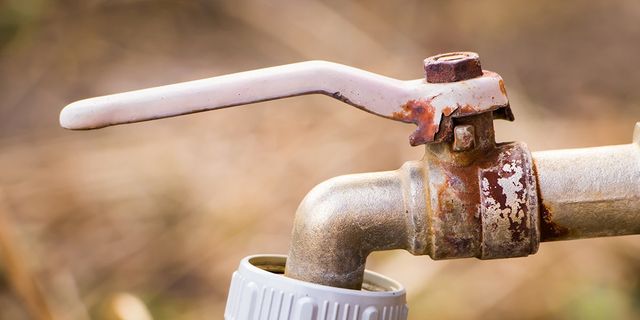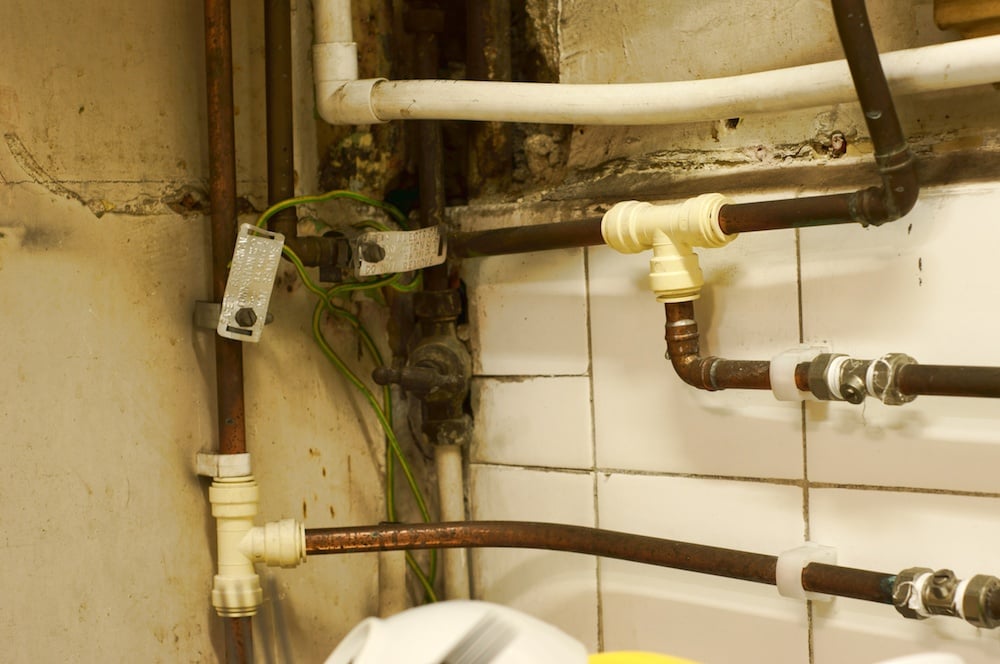What're your opinions on Plumbing Problems In Old Homes?

Older homes commonly include charm, personality, and background, however they can also bring a host of pipes problems. Whether you're taking care of aging pipelines, low water stress, or leaks, knowing just how to attend to these common problems is critical to preserving a safe and functional home. In this overview, we'll check out the regular plumbing challenges encountered by older homes and offer practical remedies to keep your pipes in leading form.
Recognizing Typical Pipes Problems
Aging Pipelines
Among the most usual issues in older homes is maturing pipelines. Depending upon the period in which your home was built, the pipelines could be made from materials that have actually weakened gradually, such as galvanized steel, cast iron, or even lead. These products can wear away, become breakable, or create leaks, causing water damages and potential health hazards.
Water Top Quality Screening
Older pipes can impact the top quality of your water. Conduct a water high quality examination to look for contaminants such as lead, rust, or various other impurities that may be presented by aging pipelines.
Solutions for Common Plumbing Concerns
Replacing Aging Pipelines
If your home has old, degrading pipes, think about replacing them with contemporary materials like copper or PEX. This can be a considerable investment, however it will stop future concerns and boost the safety and security and dependability of your plumbing system.
Dealing With Low Water Stress
To deal with low tide stress, start by cleaning or changing old components and getting rid of mineral buildup in the pipes. If the trouble persists, it might be essential to replace sections of corroded pipes.
Fixing and Replacing Dripping Pipelines
For small leakages, you can utilize pipe clamps or epoxy putty as a short-term repair. However, it's ideal to replace dripping pipelines entirely to stay clear of more damages.
Updating Components
Upgrading old components to contemporary, water-efficient designs can enhance your home's pipes efficiency and minimize water intake. Seek fixtures with the WaterSense label for the very best efficiency.
Taking Care Of Pipe Deterioration
If your pipes are rusted, changing them with corrosion-resistant materials like copper, PVC, or PEX is the most effective option. Normal examinations and water top quality upkeep can help avoid additionally corrosion.
Low Tide Pressure
If you're experiencing low tide pressure, maybe as a result of mineral deposits, deterioration inside the pipelines, or old fixtures that are no more working effectively. This can be a significant trouble, specifically in locations like showers and sinks.
Leaking Pipes
Leakages are one more constant problem in older homes, usually triggered by corroded or worn-out pipelines. Even tiny leaks can lead to significant water damages, mold and mildew development, and increased water costs otherwise dealt with immediately.
Outdated Fixtures
Obsolete pipes fixtures such as taps, commodes, and showerheads not only look old but might also be much less effective, vulnerable to leaks, or inappropriate with contemporary plumbing criteria.
Pipe Deterioration
Deterioration is an usual issue in older pipes, especially those made from galvanized steel or cast iron. Rusty pipes can restrict water circulation, cause staining, and eventually bring about leaks or pipeline bursts.
Assessing the Problem of Your Plumbing
Evaluating Visible Pipelines
Start by evaluating any visible pipes in your house, such as those in basements, crawl spaces, or under sinks. Try to find signs of rust, leaks, or corrosion, which can suggest underlying issues.
Checking for Leakages
Check for leakages by examining locations around faucets, bathrooms, and under sinks. You can additionally monitor your water meter prior to and after a duration of no water use to find hidden leakages.
When to Call a Professional
While some pipes issues can be taken care of with do it yourself options, there are times when it's ideal to contact a specialist. If you're handling significant leakages, substantial deterioration, or are uncertain regarding the problem of your pipelines, a licensed plumbing technician can give professional evaluation and repair work.
Preventive Upkeep Tips
Regular Inspections
Frequently examine your pipes system for indicators of wear and tear. Catching issues early can avoid pricey repairs down the line.
Water Pressure Policy
Ensure your water pressure is within the recommended range to prevent worrying your pipelines and components. A plumbing professional can install a pressure regulator if required.
Water Quality Maintenance
Install water filters or softeners if your water quality is poor. This can safeguard your pipes and fixtures from damage triggered by hard water or pollutants.
Positive Pipe Replacement
If your home has very old pipelines, consider aggressive substitute prior to major issues arise. This can conserve you from emergency situation fixings and water damages.
Final thought
Handling plumbing concerns in older homes calls for a combination of vigilance, preventive upkeep, and prompt upgrades. By comprehending the typical difficulties and understanding when to seek specialist aid, you can guarantee your pipes system stays functional and reputable for years to come.
Common Plumbing Issues in Older Homes and How to Fix Them
Owning an older home in Australia comes with its unique charm and a set of challenges, especially when it comes to plumbing. The Sunshine Coast has many older properties that can harbour plumbing problems that aren t just inconvenient but potentially costly. Here s a look at some common plumbing issues in older homes and expert advice on how to handle them.
Outdated Piping Materials
Many older homes were built with galvanised steel, cast iron, or even lead pipes, materials that are far from ideal by today s standards. Galvanised pipes are prone to corrosion and clogging, while lead pipes pose serious health risks.
How to Fix:
Replacing old pipes is a job for a professional. Upgrading to copper or PVC piping not only enhances water quality and flow but also increases the property s safety and value. If you suspect your home has outdated materials, a licensed plumber can conduct a thorough inspection and recommend the best course of action.
Corrosion and Pipe Degradation
Over time, exposure to water and minerals can cause pipes to corrode, leading to leaks, bursts, and water contamination. Corrosion is especially common in homes over 50 years old.
How to Fix:
Regular inspections can catch early signs of corrosion. If corrosion is found, the affected section of piping often needs to be replaced. For homes with extensive corrosion, a complete plumbing overhaul might be necessary. It s crucial to consult with a plumbing expert to understand the extent of the issue.
Tree Root Intrusion
Older neighbourhoods usually have mature trees whose roots can intrude into pipe lines, causing blockages or damage. This is particularly problematic for sewer lines, where roots seek out water sources.
How to Fix:
A plumber can use a specialised camera to inspect sewer lines for root intrusion. If roots are a problem, methods like root cutting or hydro-jetting can clear the obstruction. In severe cases, part of the pipe may need replacing. Consider root barriers around the piping to prevent future issues.
Inadequate Water Pressure
Low water pressure in older homes can be due to various factors, including corroded water lines, sediment build-up in pipes, or outdated fixtures.
How to Fix:
First, check if the low pressure is isolated to one area or throughout the house. Replacing old fixtures can sometimes resolve the issue. However, if the problem is more widespread, it might be due to sediment or corrosion. Flushing the system or replacing the affected pipes usually restores normal pressure. Again, a professional assessment is advisable.
Outdated Fixtures
Older homes often feature fixtures that are not only visually dated but functionally inefficient. This includes everything from toilets and taps to showerheads and washing machine hoses.
How to Fix:
Updating these fixtures can improve both water efficiency and the aesthetic appeal of your home. Modern fixtures are designed to conserve water, which can significantly reduce your water bill and lessen your environmental impact.
Conclusion
Maintaining the plumbing in an older home requires a proactive approach. Regular checks and updates are key to preserving these beautiful properties. If you re facing plumbing issues in your older home, it s best to call on experienced professionals like Green & Gold Plumbing & Gas. With the right expertise, even the most daunting plumbing problems can be resolved, ensuring that your home s character is maintained while its functionality is enhanced.
https://gandgplumbing.com.au/common-plumbing-issues-in-older-homes-and-how-to-fix-them/

We are very intrigued by Main Plumbing Issues Found in Old Houses and I am assuming you appreciated the entire blog entry. Sharing is caring. Helping others is fun. Thank-you for your time spent reading it.
Schedule A Free Estimate